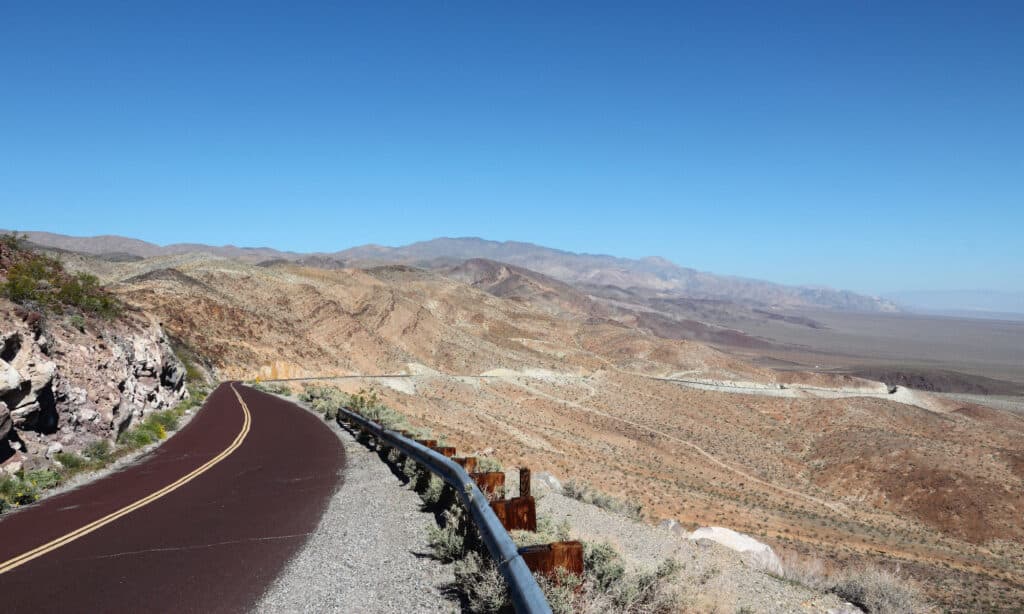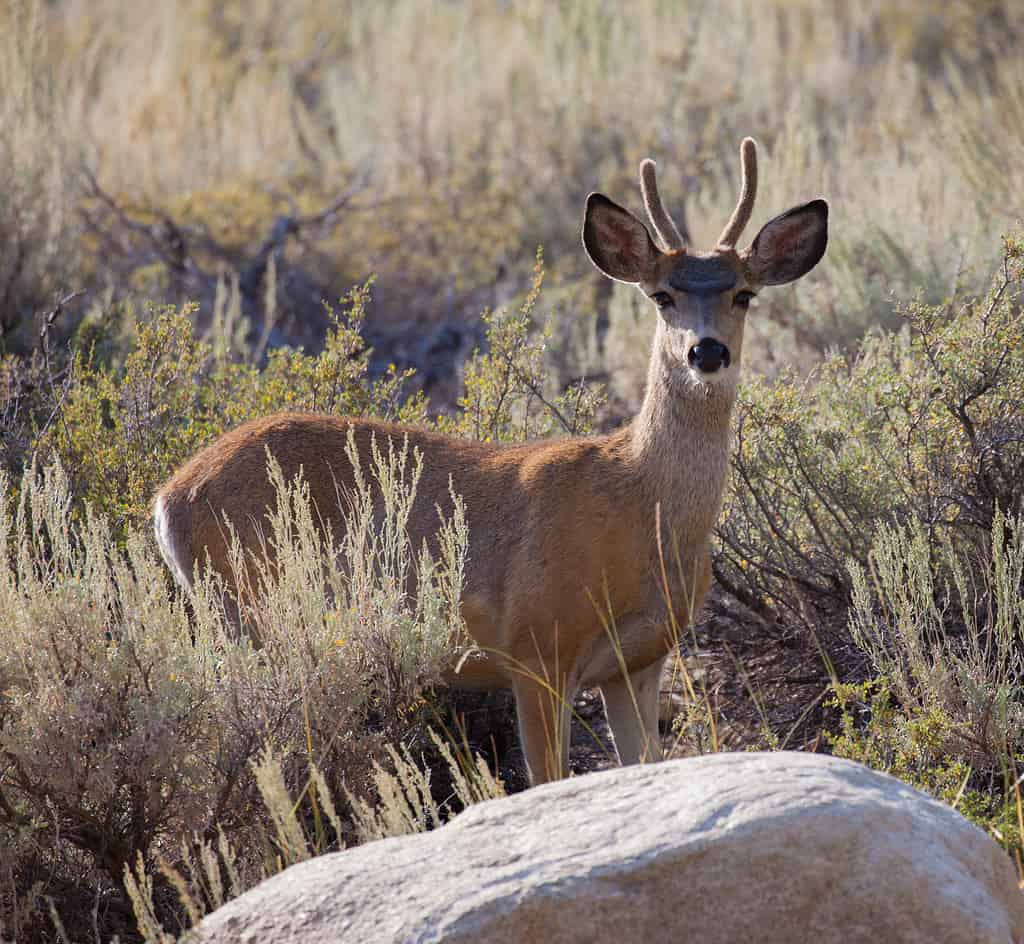California is one of the largest states in the United States, covering 162,695 square miles. The state is about 135 times larger than Rhode Island, the smallest state in the country. The state’s coastal location and vast uninhabited areas make it the perfect place for military bases. Although the Golden State has a few large military bases, one of them is larger than any others in terms of sheer size. Discover the largest military base in California and see how this 1.1-million-acre base is used!
For this article, we’re using the base with the biggest footprint as the largest base in the state instead of the largest developed area or most populous. We’ll discuss those types of bases as well, though.
What Is the Largest Military Base in California?

The vast majority of the military base is barren land where the military can test its weapon systems.
©iStock.com/tupungato
The largest military base in California is Naval Air Weapons Station China Lake, an installation that covers 1.1 million acres of land. The base’s abbreviated name is NAWS China Lake, and the name “China Lake” apparently comes from the land’s previous use as a borax harvesting site by Chinese prospectors. This vast military base operates in parts of Inyo, San Bernardino, and Kerm counties in the southeastern part of the state.
NAWS China Lake has over 2,000 structures and over 2,000 miles of paved and unpaved roadway to access different parts of the base.
The base is primarily used by the Navy for Research, Development, Acquisition, Test, and Evaluation Appropriations (RDAT&E). The base’s mission statement is “to support the Navy’s research, testing and evaluation missions to provide cutting-edge weapons systems to the warfighter.”
To that end, the military base contains airfields, a garrison, research centers, and other facilities. The base is home to three different runways measuring 7,111 feet, 9,013 feet, and 10,001 feet, respectively. Thousands of flights occur at the base each year.
Most of the installation comprises undeveloped land assets. In fact, over 90% of the land is not built up in any appreciable way. Of course, that’s important considering the area’s use for live-fire bombing tests, target development exercises, and destroying unexploded ordinance.
Just How Large Is Naval Air Weapons Station China Lake?

NAWS China Lake is bigger than the entire state of Rhode Island!
©iStock.com/Vladimir Molnar
| Place | Acres | Square Miles |
|---|---|---|
| Delaware | 1.592 million acres | 2,489 sq mi |
| NAWS China Lake | 1.1 million acres | 1,718.75 sq mi |
| Rhode Island | 776,960 acres | 1,214 sq mi |
The largest military base in California is simply gigantic. However, the measure of 1.1 million acres doesn’t mean much to the average person, so let’s provide some context for the base’s size. The simplest way of looking at this base is by comparing it to a few states.
NAWS China Lake measures in at 1.1 million acres or 1,718 square miles of area. The largest military base in California is bigger than Rhode Island, a state covering 776,960 acres or 1,214 square miles. The base is a bit smaller than the state of Delaware, a state with 1.592 million acres and 2,489 square miles of area.
This base is so large that it makes up almost 40% of the U.S. Navy’s total land holdings throughout the world. NAWS China Lake has 85% of the land that the U.S. Navy uses for RDAT&E.
Where is California’s Largest Military Base on a Map?
The largest military base in California covers a very large area in southeastern California. The base is about 115 miles northeast of Los Angeles, 140 miles southeast of Fresno, and 145 miles west-southwest of Las Vegas, Nevada. The massive base is located on the outskirts of Ridgecrest and extends far to the north of the town.
What Is the Most Populous Military Base in California?
Although NAWS China Lake is the largest military base in California, it’s not the most populous. The base has fewer than 1,000 military employees along with 5,500 civilians and contractors in the area. However, when we add in the population of the surrounding area, roughly 30,000 people live in the region.
According to the Defense Department, Camp Pendleton North in Southern California has a population that exceeds 42,000 active-duty marines and sailors along with tens of thousands of family members, civilian employees, and reservists.
So, although NAWS China Lake is a very large military base by size, Camp Pendleton has far more daily activity.
What Animals Live Near Naval Air Weapons Station China Lake?

Young Buck Mule Deer (Odocoileus hemionus) in the Eastern Sierra high desert of California
©epantha/iStock via Getty Images
NAWS China Lake covers an enormous but somewhat barren area. Still, many animals share the land with the military in this part of the country. Some of the animals that a person could see in this part of the state include:
- Common side-blotched lizard
- Gopher snake
- California ground squirrel
- White-crowned sparrow
- Mule deer
- Western rattlesnake
- Zebra-tailed lizard
These are just a few of the creatures that live in this area, but many others live throughout the region as well.
The largest military base in California sprawls out over 1.1 million acres. It’s an impressive area that is vital to the ongoing development of weaponry and skills for the U.S. military. This sizeable base will probably continue to grow, adding new structures, more workers, and other facilities in the future.
The photo featured at the top of this post is © vaalaa/Shutterstock.com
Thank you for reading! Have some feedback for us? Contact the AZ Animals editorial team.






